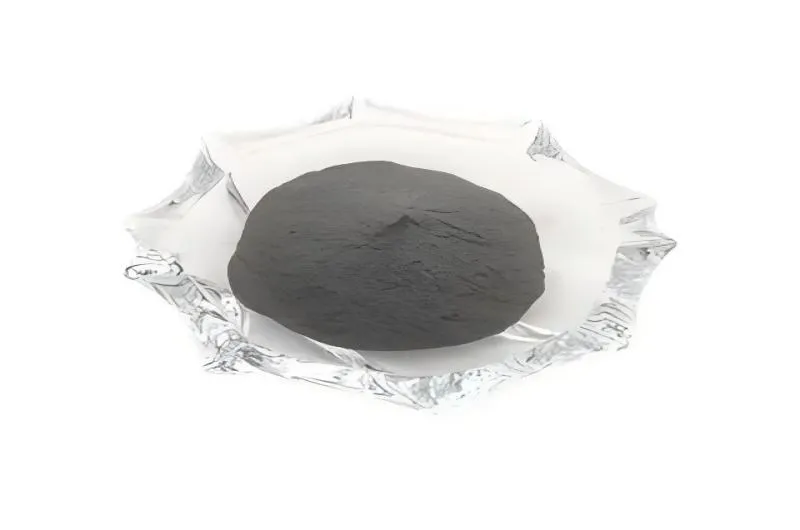BY  GENN
GENN
2024/08
Blog
Is It Safe To Touch Silicon Carbide?
Silicon carbide (SiC) stands as a testament to human ingenuity and the relentless pursuit of material excellence. Chemically, SiC is a compound of silicon and carbon, existing in various crystalline forms with properties that place it at the pinnacle of industrial materials.
Understanding Silicon Carbide
SiC commands attention not only for its exceptional hardness, ranking around 9-9.5 on the Mohs scale but also for its unparalleled thermal and electrical conductivity. These properties make it indispensable in applications requiring high durability and heat resistance. Chemically, SiC exhibits robust stability against harsh environments, showing minimal reactivity with acids and alkalis—a trait that enhances its longevity in various operational settings.
From its raw mineral state to finely processed powders and grains, silicon carbide manifests in forms tailored to specific industrial needs. Coated materials and composite structures extend their utility across grinding wheels, cutting tools, semiconductor devices, and protective coatings for surfaces exposed to extreme conditions. This versatility underscores its role as a cornerstone in modern materials engineering, where tailored forms of SiC cater to nuanced requirements across industries.
Safety Aspects of Touching Silicon Carbide
Safety Profile
Toxicity and Health Risks
While silicon carbide is generally considered non-toxic in its solid state, certain processes such as grinding, cutting, or sanding can release fine particles of SiC into the air. Inhalation of these particles should be avoided, as they may cause respiratory irritation or other health effects. Long-term exposure to airborne silicon carbide may potentially lead to respiratory disorders, although such occurrences are primarily associated with industrial settings where SiC dust is prevalent.
Potential Hazards in Different Forms
In various forms such as powder, coated materials, or abrasive tools, silicon carbide presents different levels of risk. Fine SiC powder can pose inhalation hazards, while coated or bonded SiC materials used in industrial applications may cause skin irritation upon prolonged contact. Solid silicon carbide in manufactured products like ceramics or semiconductors generally poses minimal risk when handled appropriately, adhering to standard workplace safety practices.
Guarding Against Invisibility: The Risks of Dust Inhalation
Despite its solid state, silicon carbide poses inhalation risks when handled in particulate forms. Fine dust particles can enter the respiratory system during handling or processing, potentially causing respiratory issues over prolonged exposure. Mitigating these risks involves adherence to strict workplace safety protocols, including the use of appropriate respiratory protection and ensuring well-ventilated workspaces.
Abrasive Truths: Addressing Skin Contact Concerns
Direct skin contact with silicon carbide particles may lead to irritation, primarily due to its abrasive nature. While acute contact typically results in minor irritation, prolonged exposure can exacerbate skin sensitivity. Implementing preventive measures such as wearing protective gloves and minimizing direct skin contact remains pivotal in reducing potential dermatological impacts associated with handling SiC.
Regulatory Vigilance: Upholding Occupational Safety Standards
Occupational Safety and Health Administration (OSHA) guidelines underscore the importance of implementing robust safety measures when handling silicon carbide. These standards advocate for comprehensive risk assessments, employee training on safe handling practices, and adherence to established exposure limits. Additionally, proper storage and handling procedures are essential to mitigate inadvertent exposure and ensure workplace safety compliance.
Touch and Skin Contact
Short-Term Effects of Touching SiC
Direct contact with solid silicon carbide typically results in minimal short-term effects on the skin. However, abrasive forms such as grinding wheels or coated materials may cause mechanical irritation or abrasions if handled without protective gloves. While not inherently toxic through skin contact alone, prolonged exposure to abrasive SiC surfaces without protection can lead to discomfort and potential dermatological issues.
Precautionary Measures and Protective Gear
To mitigate potential risks associated with handling silicon carbide, especially in abrasive forms, using appropriate protective gear is crucial. This includes wearing gloves, safety glasses, and, where necessary, respiratory protection when handling fine powders or performing grinding operations. Adequate ventilation in workplaces where SiC is processed helps minimize airborne particulates, thereby reducing the risk of inhalation exposure.
Regulatory and Safety Standards
Guidelines from Safety Organizations
Safety regulations regarding silicon carbide are primarily governed by organizations such as the Occupational Safety and Health Administration (OSHA) and the Environmental Protection Agency (EPA). These agencies provide guidelines for the safe handling, storage, and disposal of SiC materials to prevent occupational hazards and environmental contamination. Compliance with these regulations ensures that industrial operations involving silicon carbide maintain a safe working environment for employees and minimize ecological impact.
Industry-Specific Regulations
Different industries adopt specific safety protocols tailored to their use of silicon carbide. For instance, semiconductor manufacturing facilities adhere to stringent cleanliness standards to prevent contamination of SiC-based components.
Similarly, the automotive and aerospace sectors implement safety measures to protect workers handling SiC-based abrasives or composite materials. Industry-specific regulations ensure that silicon carbide is utilized efficiently while maintaining occupational safety standards.










